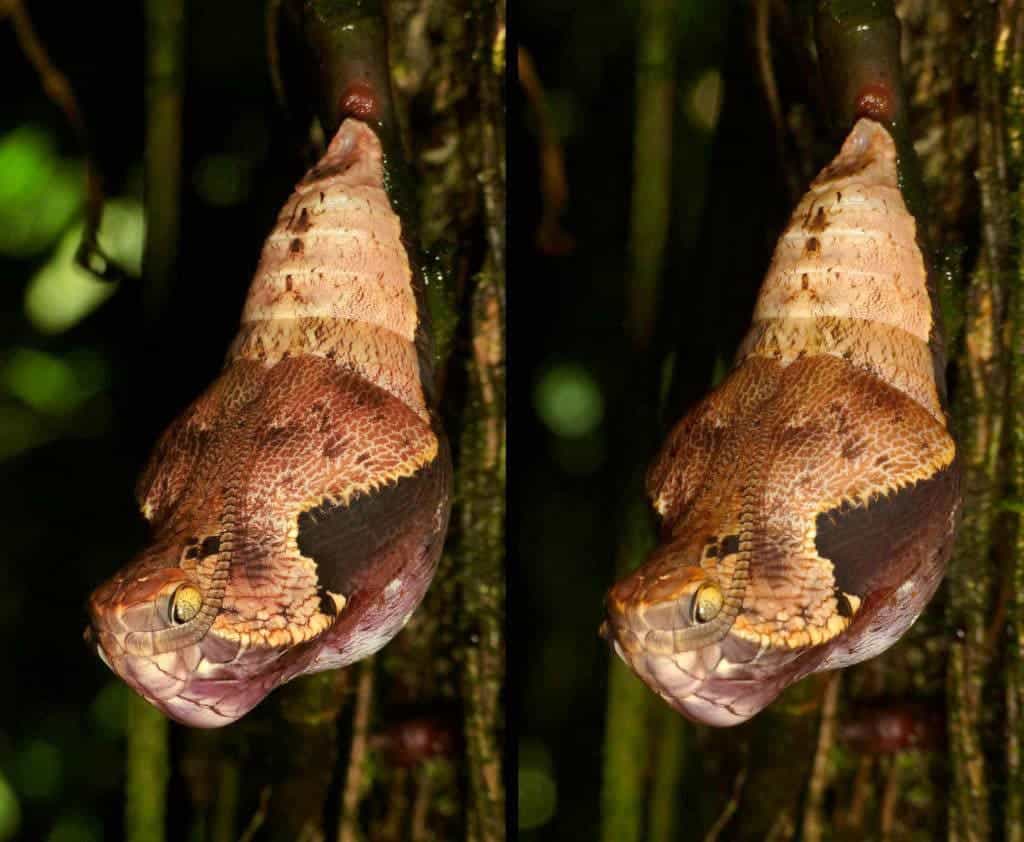Yes, you read this right, this is not a snake — it’s not even slightly related to a snake. The animal portrayed above has developed a technique called mimicry, evolving in a way to imitate another, usually to protect itself.
The animal above is called Dynastor darius darius, and was first described all the way back in 1775. Dynastor is a genus of butterflies in the Nymphalidae family. Members of the genus can be found from Mexico to Central and South America. It has a very odd appearance for a caterpillar, with a long green body and black, hairy head. Yes, what you thought was a snake is actually a caterpillar — an animal waiting to become a butterfly.
But when it enters its pupal stage (that is, it’s turning from a caterpillar into a butterfly), it puts on a very particular “mask”: it starts looking like a snake, with one of the best animal mimicries I’ve ever seen.
It takes Dynastor thirteen days to become a butterfly, and for that duration, it resembles the head of a Gaboon pit viper — the kind of creature you really don’t want to come across. The butterfly uses mimicry to look like a snake and scare off potential predators, but its disguise wouldn’t be very effective if it remained static. So it actually evolved another trait: it can still sense and react to the world outside through its shell of hardened protein, something unusual for pupae.
“The answer may be that the predator itself turns and flees after suddenly coming face-to-face with a realistic ‘snake’ that waves violently back and forth,” write Annette Aiello and Robert Silberglied in Life History of Dynastor Darius in Panama, “as does the pupa of Dynastor darius when disturbed.”
As mentioned above, this technique is called mimicry, and it’s not restricted to butterflies. Mimicry occurs when a group of organisms, the mimics, evolve to share common perceived characteristics with another group, the models. For caterpillars, evolving this kind of bluff appearance makes a lot of sense, since they’re basically protein just waiting to be picked up by the right predator.
The unusual evolution is driven by the selective action of a signal receiver or dupe. Mimicry is related to camouflage, in which a species resembles its surroundings or is otherwise difficult to detect, but mimicry isn’t only visual. Though visual mimicry through animal coloration is most obvious to humans, other senses such as olfaction (smell) or hearing may be involved, and more than one type of signal may be employed.
In evolutionary terms, this phenomenon is a form of co-evolution, part of a biological arms race.




